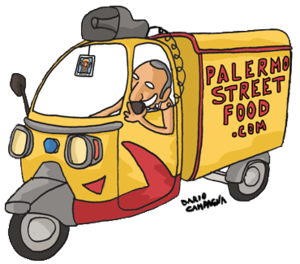Do you know the shape of Palermo? Today it is kind of like a scraggly half moon that hugs the coast of the Tyrrhenian Sea. But That is not how it has always been.
It all started in the 700 AD when the Phoenicians decided to build a small settlement in the area we now know as Palermo. They chose this area probably because they wanted to take advantage of the surrounding mountains which provided a natural system of defense.
Fast forward to the the Kalbids, an Arab Muslim people that ruled Sicily from 948ish to 1053ish and used Balàrmuh (aka Palermo) as an important economic hub in the Mediterranean. Actually, legend has it that it was the Kalbid people who brought LEMONS to Sicily! Ok, sorry, we digress... gahh, not everything has to ALWAYS be about food... just, most of the time!
Anyway, back to Palermo's urban history. The Kalbids had the city set up as a rectangle. The main street in this rectangle went from the port to the palace. This street was called Il Cassaro, which is today's Corso Vittorio Emanuele; although, most locals know what you mean if you say "Il Cassaro," even today.
Il Cassaro meets Via Maqueda where, in the 1600s, the famous Quatro Canti were constructed. This is one of the most famous cross roads in the world. Actually, Palermo's historic city center is the largest city center in Europe. And that is precisely where we suggest that most people stay when they visit our city. Our favorite site for finding an apartment to stay in, in Palermo, is on the website of our friends at Likibu because they compare all of the popular apartment rental sites (here's the link).
Oh, and, here's another fun fact, Il Parco della Favorita, is the largest urban park in Italy. You can even see it on this map above. Don't you love it? It was designed for us by our friends at Modern Art Map. They have a mission to create art using imagery, colors, and maps to capture the essence of a city. Of course for Palermo they choose a passionate red! Here's the link to their site.

